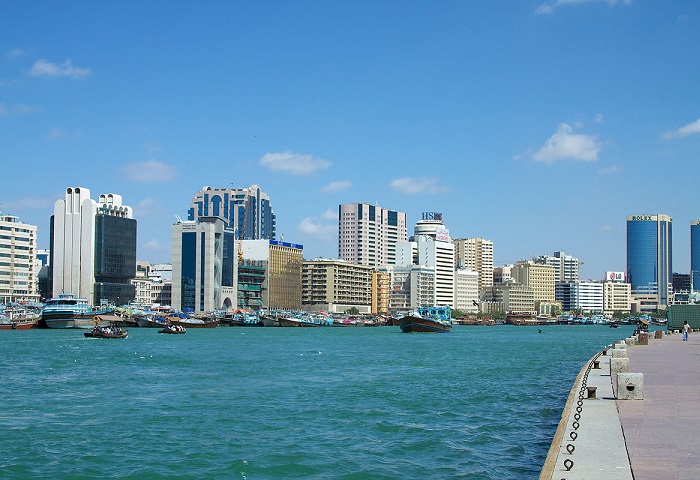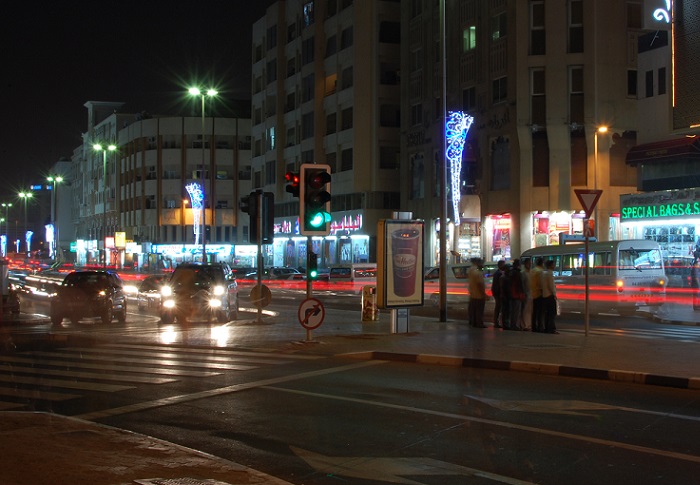This is about Bur Dubai, the Emirate’s original trading hub and its commercial heart until little more than 100 years ago. Today, it may not have the flash of new Dubai further inland, but it remains a busy site of Middle Eastern trade, packed with vibrant souks and bustling jetties.
The Arab countries have a long maritime tradition that could be traced back to several thousands of years. Wooden boats, or dhows, have been used in the region for centuries, and were key in developing thriving fishing, pearl diving and trade industries. Dhows were a way of life for the coastal tribes of Dubai, who strode the sandy shores long before the five-star beach bars arrived. Today, the Emiratis may deal more in stocks than fish – but this traditional mode of transport still plies a handsome trade on the main waterway of Dubai Creek.

Bur Dubai is about a busy location – docking stations on either side of the creek were lined with huge, multi-coloured cargo dhows, packed with crates bringing merchandise from Iran and beyond. Meanwhile, commuters crossed the waterway on abras: short, nippy wooden dhows with open sides and simple roofs that act as water taxis.
There’s a slew of organized dhow tours available across Dubai – including lunch, dinner, moonlight and sightseeing cruises. The Cross-Creek abra journey is the best among them, which passes next to the souks along the creek’s banks, where jewelers, pastry vendors, tailors and spice sellers were gearing up for the hustle and bustle of evening trade.
Up ahead, the creek’s meandering curves were lined with buildings that steadily increased in size, from the soft, low domes of the Grand Mosque, past the consular district to the distinctive ridged towers of the Radisson Blu Hotel and onto the sparkling inland skyscrapers, including the pyramid-shaped Wafi Mall; the vibrant Downtown district, with its numerous hotels, shops and restaurants; and the world’s tallest building, the Burj Khalifa.

As the sun sank and the skies darkened, hundreds of tiny lights covering the Al Mansour Dhow – one of Dubai’s oldest dhows that has been turned into an iconic travelling restaurant – flickered on, and the elegant old ship lit up on the water, allowing us to admire the statuesque vessel in full evening attire. There was lull in the conversation on our little boat, as all eyes turned to the brightly lit dhow proudly setting out on its evening excursion. Too soon, the abra pulled up at the Deira Souks Abra Station, depositing passengers to explore the intoxicating avenues of the spice market or barter their way through the glittering stalls of the gold souk.
The water taxi trip lasts just a few minutes, but takes us worlds away from the shiny buildings and flash cars of the modern Emirate. For that brief trip, travelling across the waters that were once the highway connecting Dubai to the east, we will feel like we had stepped back in time.
The Radisson Blu Hotel is one among the luxurious stay providers that can take you to the water trip over Deira Creek in Al Mansour Dhow. Click here to get a booking.




![The Top & Most Popular Seafood Bucket Restaurants in Dubai for you [Never Miss]](https://uae24x7.com/wp-content/uploads/2020/09/8-seafood-in-a-bucket-scaled-e1600739237403.jpg)
![Procedures for Renewing the Driving License in Abu Dhabi [3 Simple Steps]](https://uae24x7.com/wp-content/uploads/2020/07/Capture-9-e1595666454466.jpg)





